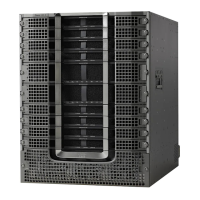Feature Overview
The STM feature allows service providers to configure a maximum bandwidth threshold over a fixed period,
for a specific service class (or QoS profile). The subscribers who exceed this configured threshold can then
be identified and allocated a reduced QoS. This feature supplements current techniques such as NBAR and
ACLs, to ensure that a minority of users do not consume a majority of a cable network’s bandwidth.
Current subscriber controls, such as NBAR and ACLs, examine all packets coming into the CMTS. These
techniques can curb a large volume of problem traffic, but they are not as effective in dealing with the latest
generation of peer-to-peer file-sharing applications that can place heavy demands on a network’s available
bandwidth.
The STM feature allows service providers to focus on a minority of potential problem users without impacting
network performance or other users who are abiding by their service agreements.
The STM feature supports two types of monitoring:
• Legacy Monitoring—Legacy monitoring allows you to set up a single monitoring duration without the
ability to choose the time of day when that monitoring is performed. The configured monitoring parameters
remain constant throughout the day.
• Peak-Offpeak Monitoring—Peak-Offpeak monitoring allows you to specify up to two high-traffic periods
in a day for monitoring, in addition to the ability to continue monitoring during the remaining (or off-peak)
periods. By combining the peak time option with weekend monitoring, you can identify and limit the
bandwidth usage of certain subscribers for up to two peak network usage periods during weekdays, and
during a different set of peak usage periods on weekends.
When a cable modem goes offline and remains offline for 24 hours, the Cisco CMTS router deletes its service
flow IDs from its internal databases, and also deletes the modem’s traffic counters. This can allow some users
to exceed their bandwidth limits, go offline, and come back online with new counters. The Subscriber Traffic
Management feature helps to thwart these types of theft-of-service attacks by implementing a penalty period
for cable modems that violate their service level agreements (SLAs). Even if a cable modem goes offline, its
counters are still reset, and the CMTS continues to enforce the penalty period.
Feature List
The Subscriber Traffic Management feature has the following operational features:
•
Subscriber Traffic Management 1.1 (STM 1.1) supports cable modems that have registered for DOCSIS
1.1 operations (using the service class/service flow ID [SFID] model).
•
Up to 40 enforce-rules can be created on each router.
•
Separate enforce-rules can be used for downstream traffic and for upstream traffic. However, the limit
on the total number of enforce-rules that can be configured includes the upstream and downstream rules
combined.
• Each enforce-rule uses a subscriber’s registered QoS profile to identify which users should be monitored
for excessive traffic for DOCSIS1.0 cable modems. The registered QoS profile must exist on the Cisco
CMTS. If you want to manage cable modems that are using QoS profiles that were created by the cable
modem, you must first manually create a QoS profile with the exact same QoS parameters on the Cisco
CMTS, and then allow the cable modem to come online using the manually created profile.
Cisco cBR Series Converged Broadband Routers Quality of Services Configuration Guide for Cisco IOS XE
Fuji 16.7.x
120
Subscriber Traffic Management
Feature Overview

